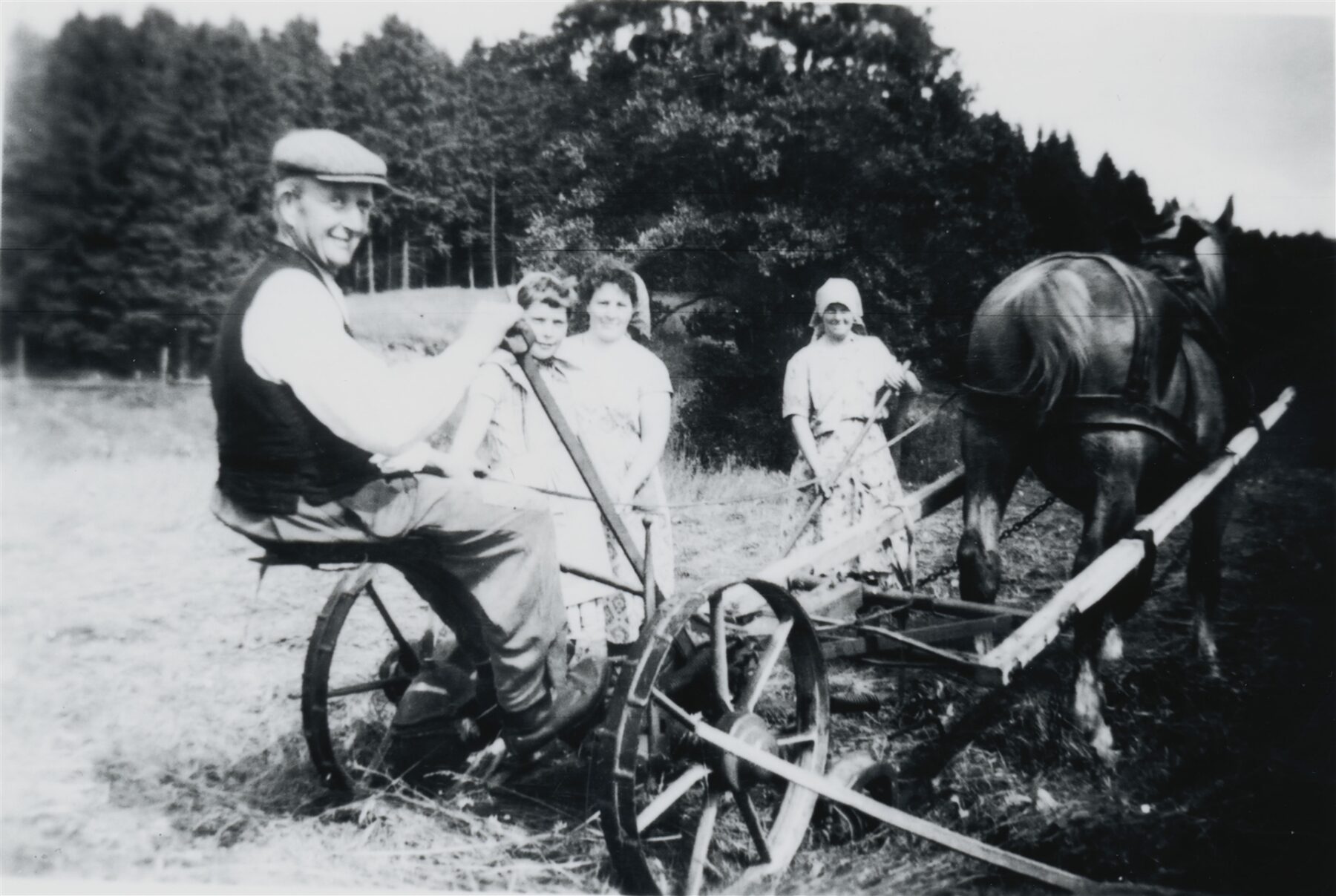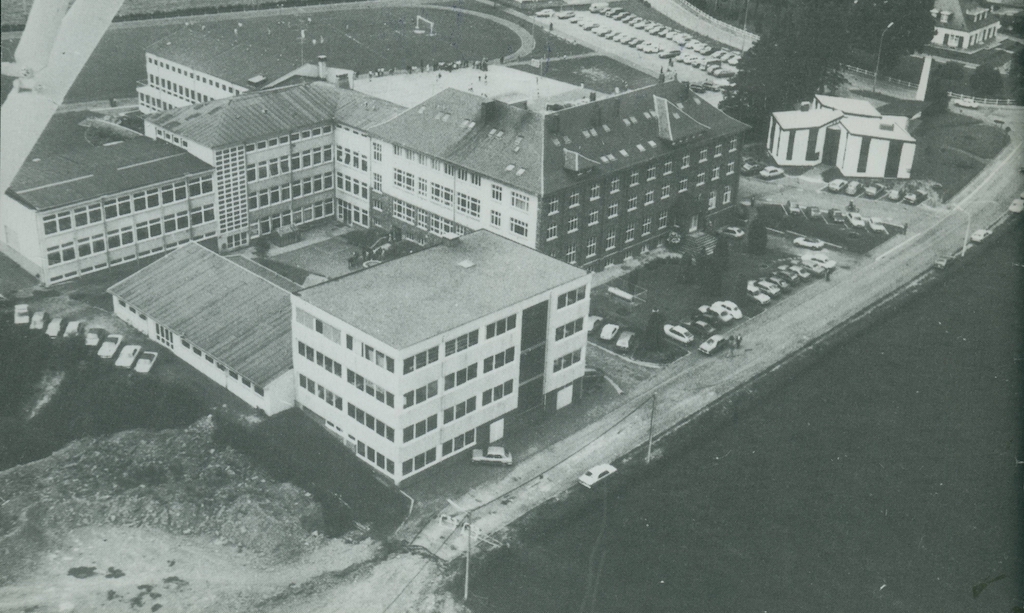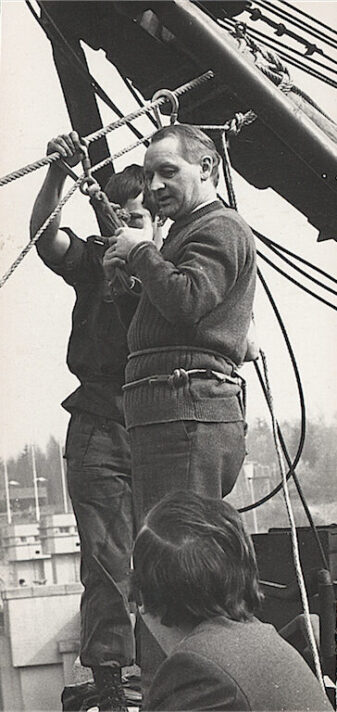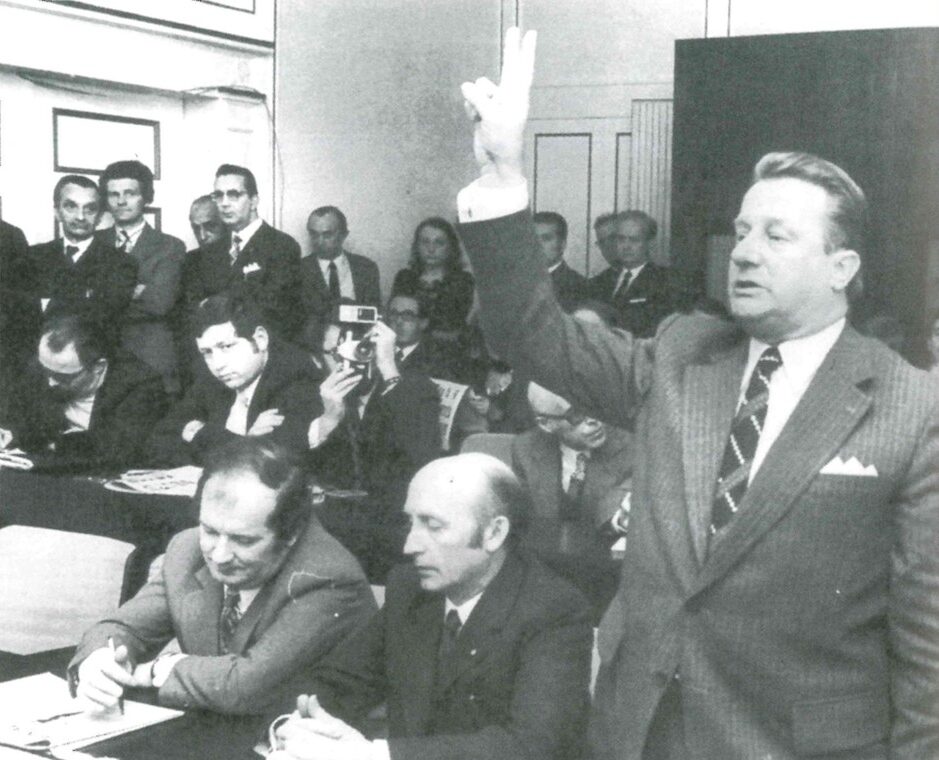Over the course of the 19th century, Belgium had quickly developed into a unitarist central state. After 1945, however, this was but an illusion. A French-speaking upper class dominated the state and the Walloon and French-speaking population benefited from their knowledge of the official language. The Flemish majority demanded more cultural and linguistic rights. Thus, resistance to the central state grew.
The country was noticeably on the move from the 1950s onwards. A study centre named after the Belgian politician Pierre Harmel was founded in 1948. It drew up a report on challenges facing the country by 1955, which was adopted in 1958. As a result, language boundaries were established by law in 1962, and the use of languages in education was fixed a year later. This also created an official German language area in Belgium, which included the nine German-speaking municipalities of today. From now on, every German speaker could theoretically claim their right to communicate with state authorities in their mother tongue. In practice, however, it took many years before this right was generally implemented. At the same time, this gave rise to a new self-confidence among the minority for their rights vis-à-vis the state.
From that moment on, the present-day large municipalities of Malmedy and Weismes belonged to the French-speaking area. The decision on affiliation was made by the respective municipal councils. In the municipality of Kelmis, the decision was made narrowly, with only one majority vote in favour of the German language area.
But the language laws were only a first step. The Flemish movement demanded not only linguistic rights in education, administration and in court, but also more political say. They saw themselves as being disadvantaged. The East Belgian students in the Flemish city of Leuven experienced the great tensions between French speakers and Flemings at first hand. The fierce intra-Belgian tensions of the 1960s hardly registered in East Belgium, and were barely discussed in the press. These autonomy discussions partly overwhelmed the minority, which had been torn back and forth throughout history and had to position itself from the late 1960s onwards.
A look back:
- The two decades after the end of the Second World War were marked by a strong depoliticisation of public life in East Belgium. There was the common saying that an East Belgian would no longer even want to become a member of the Society of the Sacred Heart )as a symbol of un apolitical, ‘harmless’ association). This was symptomatic for the mood at the time, and such behaviour was part of collective silence.
- Public opinion was determined by a newspaper with a monopoly position, the Grenz-Echo. It was the mouthpiece of the Christian Social Party (CSP). This bourgeois-conservative party was almost always part of the governing coalition in the Brussels parliament. The CSP dominated political life on the ground: Between 1946 and 1965, between 69 and 93 percent of eligible voters in East Belgium voted for this party. The Christian Social Party was considered the ‘party of the eastern cantons’.
- On the administrative level, district commissioner Henri Hoen governed the region between 15 January 1945 and 1 December 1976. Until the 1960s, he attempted to implement the political guidelines formulated by the Belgian government in 1946: an extensive closure of the German-Belgian border and an orientation of the German speakers towards the interior of the country, the spread of Belgian nationalism and the promotion of the French language in administration and education. Some complained that this was done to the detriment of the German language, while others saw advantages in a society with advanced knowledge of German and French.
- Some East Belgians felt that they were denied economic and professional opportunities in Belgium. The Belgian Eifel was also structurally weak. Jobs were lost in agriculture. Alternative forms of employment were not sufficiently available. Emigration was high and economic development at a very low level.
Previous research points to watersheds and turning points in the 1960s: generational ones, as younger politicians brought a new quality to the debate; social ones, since it was here that the disadvantages of rural areas and the minority became particularly clear; and political ones, as the dominance of the CSP became so great that it provoked counter-reactions by necessity.
Communicative memory is gradually supplemented by cultural memory, in which the social traumas of the First and Second World Wars are touched upon or even made the subject of discussion:
- New historical associations are founded in Sankt Vith, Eupen and Kelmis.
- Young German and Swiss scholars work on the times when the region changed states from 1920 to 1945, as well as on the interwar and wartime periods.
- Belgian Radio (Belgischer Hörfunk, BHF) broadcasts a series on ‘50 Years of East Belgium’.
- The first historiographical works from the region appear.
In the 1960s, a gradual ‘diversification of opinion’ emerged: the Aachener Volkszeitung published a daily East Belgium supplement (1965-1989); the editor-in-chief of the Grenz-Echo Henri Michel was replaced by Heinrich Toussaint, who was much more liberal in permiting other; Belgian Radio, broadcasting in German, expanded its programme and contributed to the formation of opinion.
Until 1965, the Christian Social Party (CSP) was the only messenger of East Belgium in Brussels. Post-war lethargy broke up for the first time during the 1968 election campaign. The liberal Party for Freedom and Progress (Partei für Freiheit und Fortschritt, PFF) won a third of the votes after a remarkably modern election campaign. The CSP only just managed to hang on to their absolute majority. From today’s perspective, many votes may have been less a vote for the liberal party than an expression of protest, which the now co-opted senator Michel Louis (PFF) from Sankt Vith carried to Brussels. He unflinchingly campaigned for the recognition of the German speakers as a minority and for autonomy. East Belgium became actively and controversially involved in politics.
The general change in values changed society, everyday life and media use. New patterns of coexistence emerged, which were considerably strengthened by democratisation in education. More and more citizens dared to participate in political life, and public life began to repoliticise.
The first regional political grouping to emerge was the Christian Independent Voters’ Association (Christlich-Unabhängige Wählergemeinschaft, CUW) in 1970, which merged with the Party of German-speaking Belgians (Partei der Deutschsprachigen Belgier, PDB) in 1971. Their spokespersons were young politicians who had become acquainted with the Flemish visions of autonomy and federalism, especially in Leuven. They made maximum demands in the autonomy discussions. They were opposed by the so-called traditional parties. A minority of the already established politicians rejected any transformation of the Belgian state. The majority in these parties observed the process with suspicion. After some hesitation, they opted for a policy of small steps in alliance with their national mother parties. Politically, East Belgium spoke with many tongues.
Political parties in Belgium gradually realised that only far-reaching reforms could save Belgium at the national level. Cultural autonomy of the language communities was but a first step, a valve to blow off some of the steam the federalist Flemings had built of in the Belgian kettle. Hence, the first state reform (1970/1971) established the Dutch, French and German cultural communities.
The autonomy of the German-speaking minority was sparked on 23 October 1973 with the establishment of the Council of the German Cultural Community. This was the first cultural council to be directly and freely elected in 1974. The Flemish and French cultural councils had already been appointed in 1971. However, not until the fourth state reform of 1993 did direct elections take place for the French and Flemish councils. The Brussels Regional Council has been directly elected since its creation in 1989.
In 1974, the Council of the German Cultural Community administered a budget of the equivalent of about 300,000 euros. It only had very few powers. For politically interested citizens, however, it was the symbol of the long-awaited recognition of the German-speaking minority with its language, history and culture. As a political forum, it was to play a decisive role in shaping the autonomy discussions and the autonomy process in Eupen and Brussels.
In 1950, there were different visions of the future for East Belgium: a region in which the French language dominated in schools, administration and everyday life. Or a region in which the German mother tongue and culture were recognised and co-determination became possible.




